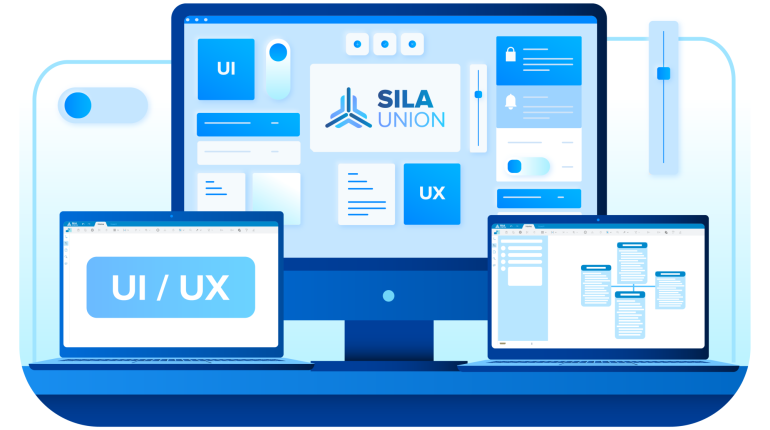
How user interface (UI) and user experience (UX) influence the perception and use of SILA Union software
In the context of digital transformation, where software is becoming a key business asset, competitive advantages are determined not only by functionality but also by the quality of user interaction with the system. User interface (UI) and user experience (UX) have evolved from secondary attributes into critical success factors for any product, directly impacting software selection, performance, and implementation.
This is especially important for comprehensive enterprise-grade platforms like SILA Union—an advanced solution for business modeling and digital transformation design. For a feature-rich tool designed to address a wide range of strategic challenges, an intuitive interface and seamless user experience are not just a design element but a fundamental architectural principle. This is why SILA Union prioritizes this aspect, recognizing that only through ease of use can the full potential of its analytical and modeling capabilities be realized.
This article will examine in detail the key aspects of user interface (UI) and user experience (UX), their interrelationships and differences, and their direct impact on the performance and perception of the SILA Union platform by its end users—business analysts, architects, and executives.
User Interface (UI)
A user interface (UI) is the set of visual and interactive elements through which a user interacts with a product. A UI includes the following components: buttons, menus, input fields, as well as visual design aspects such as colors, fonts, and the overall screen layout. The specialists at SILA Union focus on creating aesthetically pleasing and intuitive interfaces that ensure ease of use and navigation. Below is a visualization of a user interface developed at SILA Union. (Figure 1)

Figure 1. SILA Union software user interface
The "Navigator" block contains the data storage structure. It is possible to display objects and deleted elements by activating the display filter in the tree.
Displaying objects and deleted elements in the "Navigator" tree
Figure 2. Displaying objects and deleted elements in the Navigator tree
In addition to the Navigator, the system interface includes a sidebar menu with its own set of properties for displaying elements:
- Hide/show Navigator
- Hide/show Symbols (applies to models)
- Hide/show Navigator element properties
- Hide/show minimap
- Hide/show comments on the canvas
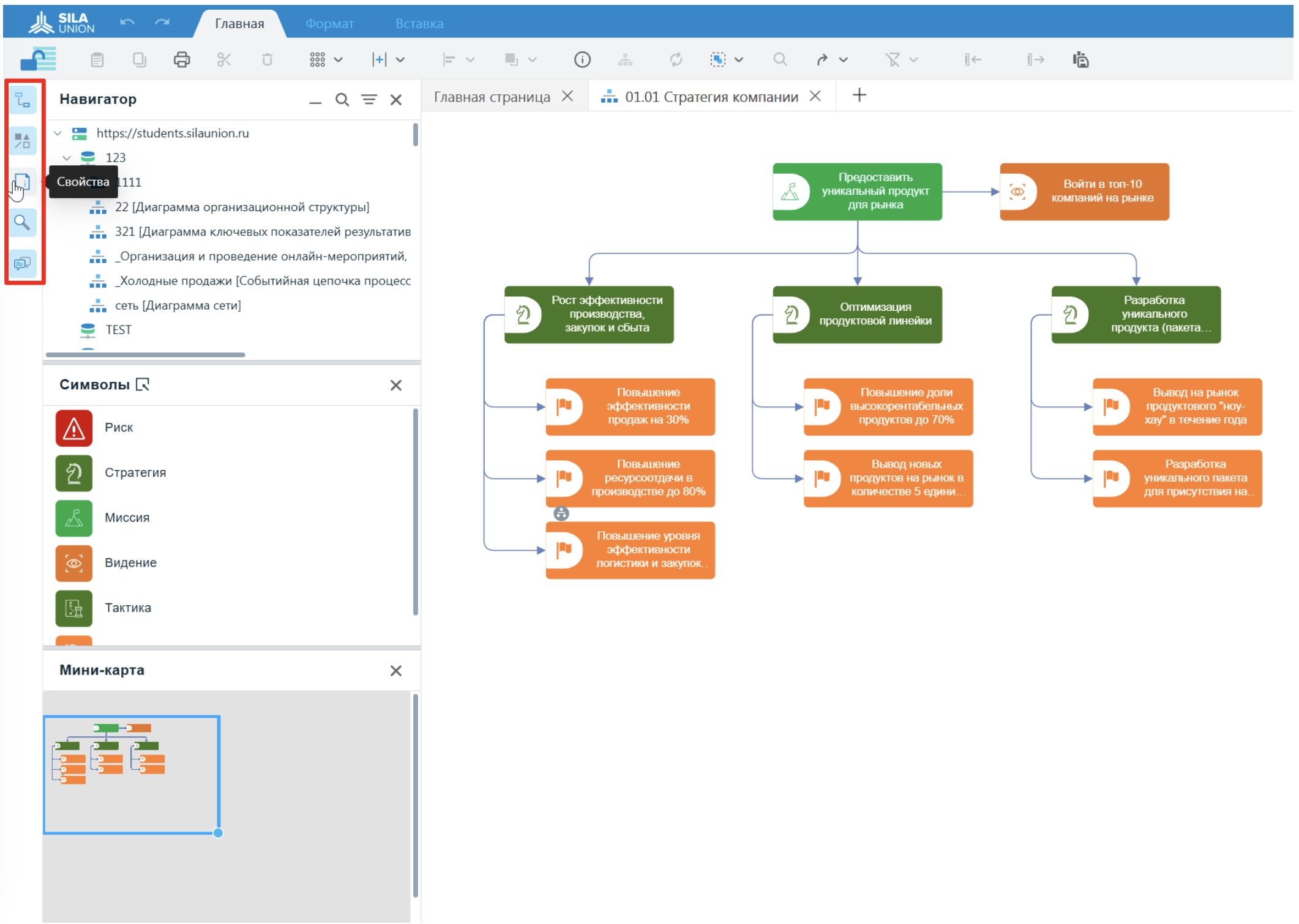
Figure 3. Side menu
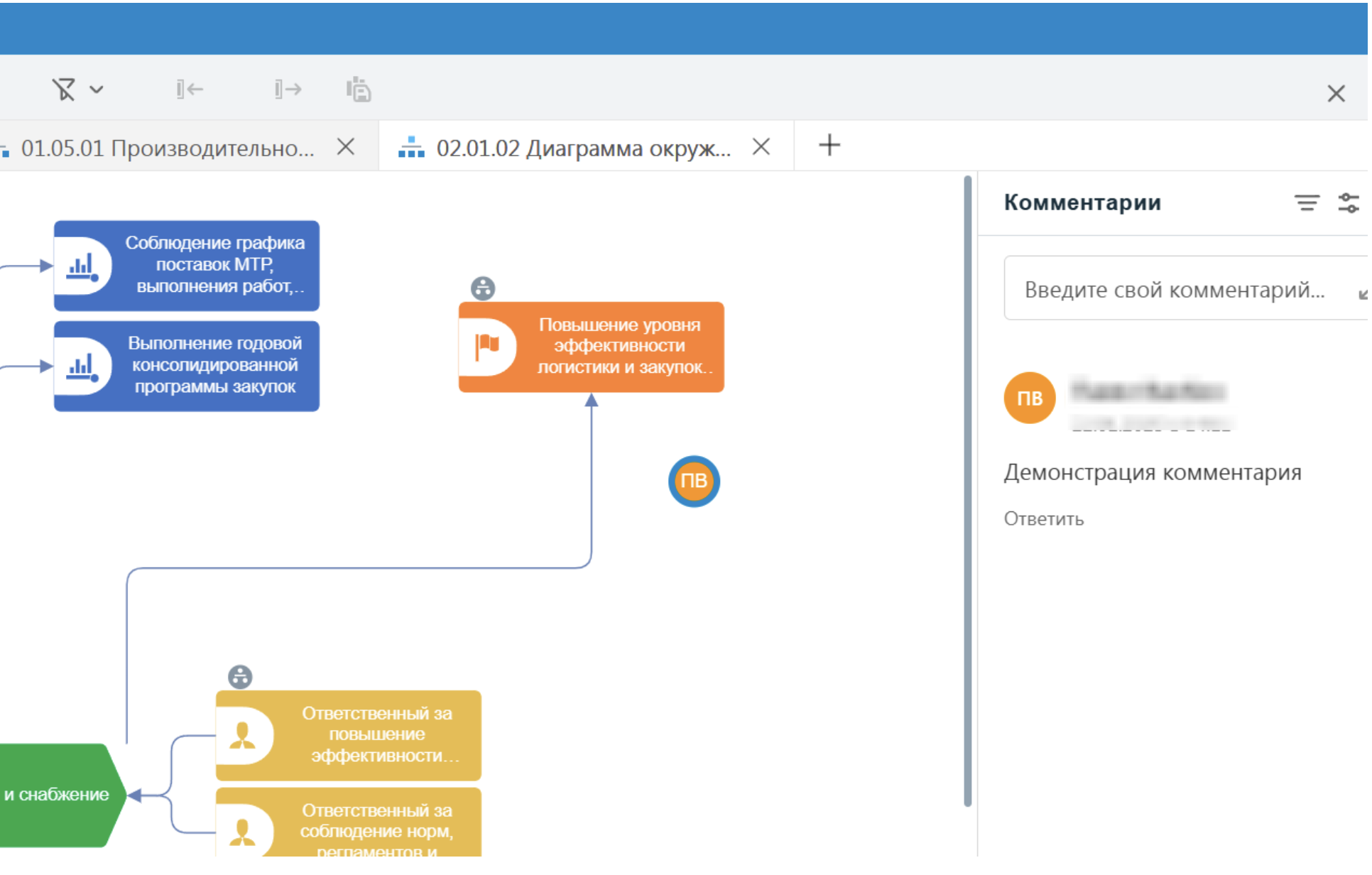
Figure 4. Comments
Comments are interactive elements: they can be dragged onto the canvas, and clicking on the icon takes you to the corresponding entry in the general list of comments.
The main page's functionality includes:
Interface customization. Users can add quick access buttons to various resources and change the interface color to personalize the workspace.
2. Working with tabs:
The "Recent" tab displays a list of models and scripts recently opened by the user. Selecting an item from the list provides quick access to its location in the directory.
The "Favorites" tab allows the user to add objects, models, folders, and databases for quick access.
The "Approvals" tab displays a list of all approvals available to the user. The tab's interface supports advanced filtering by various attributes: timeframe, author, status, and the user's role in the process.

Figure 5. The Recent tab

Figure 6. Favorites tab

Figure 7. The "Approval" Tab
User Experience (UX)
User experience (UX) is the holistic perception of a product, formed through its use. Unlike the user interface (UI), which is responsible for visual presentation and interactive elements, UX encompasses the entire spectrum of user interaction with the system. Its key objective is to ensure efficiency, convenience, and satisfaction in achieving set goals.
Developing a high-quality UX requires an in-depth analysis of user behavior, studying their needs, pain points, and interaction paths with the product. This data informs continuous testing, optimization, and updating of the system. This user-centered approach is the foundation of the SILA Union tool, directly impacting its effectiveness and competitive advantage.
Interaction with the System
UI/UX Design at SILA Union
SILA Union is one of the leading software solutions on the Russian market for business process modeling, corporate architecture, and digital transformation design.
SILA Union enables comprehensive AS-IS and TO-BE business design across various interconnected dimensions:
- Business Processes
- Organizational Structure
- Mission, Vision
- Key Performance Indicators
- IT Architecture
- Regulations, Reports, Instructions, etc.
- Objects, Resources, Technologies
- Structure, Formulas, Attributes
- Requirements, Layouts, Tasks
Key Benefits of SILA Union, Backed by Thoughtful UI/UX Design:
1. A Single, Centralized Data Repository. The software features a single repository, allowing employees to create and store databases, folders, and models. All objects have customizable access rights, ensuring effective collaboration between employees.
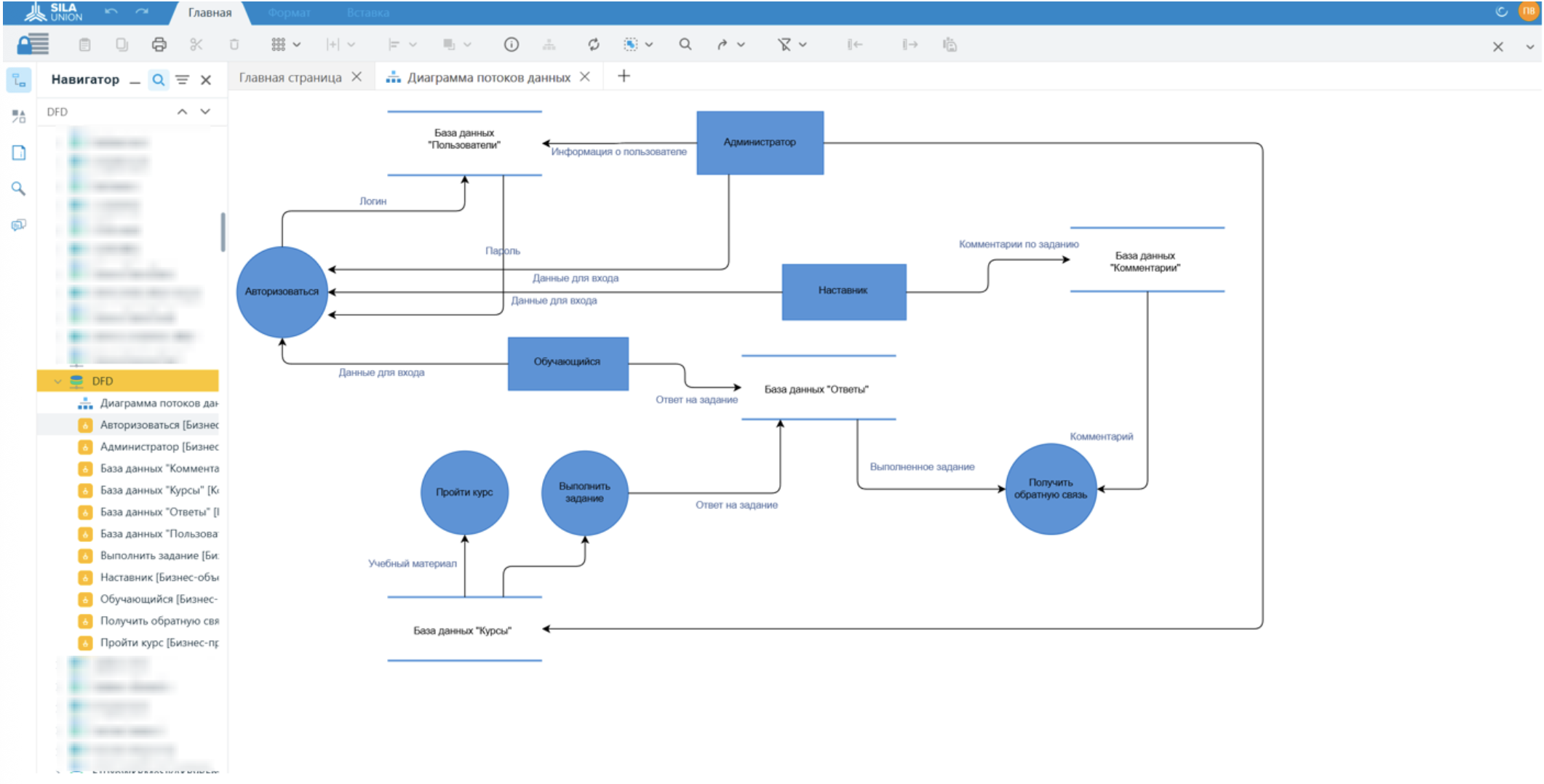
Figure 9. Tree Repository
2. Intuitive and modern interface. The sleek design and logical structure allow users to quickly master the platform and work productively. The interface is developed using all modern technologies and utilizes solutions for interoperability with other software products.
3. Data search. The system provides advanced search capabilities across all repository elements—documents, models, and other similar information—without wasting time. Searches can be performed across databases, folders, objects, and relationships.
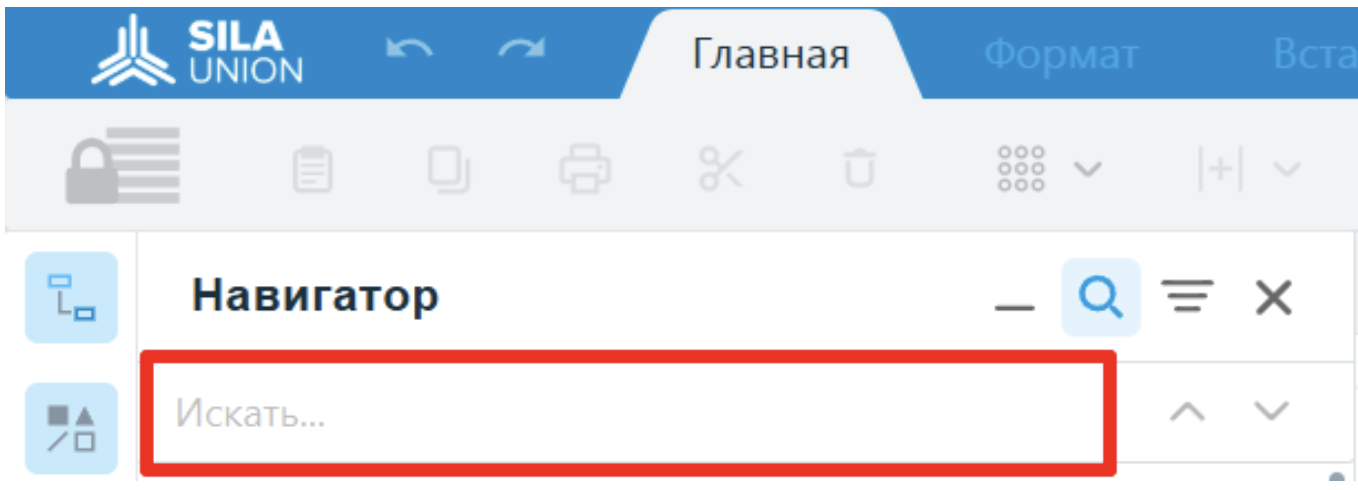
Figure 10. Searching in the Navigator
You can search for deleted items using additional filters.

Figure 11. Search by Filters
The system also includes a search assistant that searches the database and returns matches. When clicked, they are displayed in the "Navigator" tree.

Figure 12. Search Assistant
All of this highlights the importance of the user interface and ease of use of the SILA Union system.
4. Extensive customization options. With script support, users can automate routine operations and tailor the platform's functionality to specific needs. Running scripts is intuitive, and their results can be easily exported for further use as a ready-to-use file.
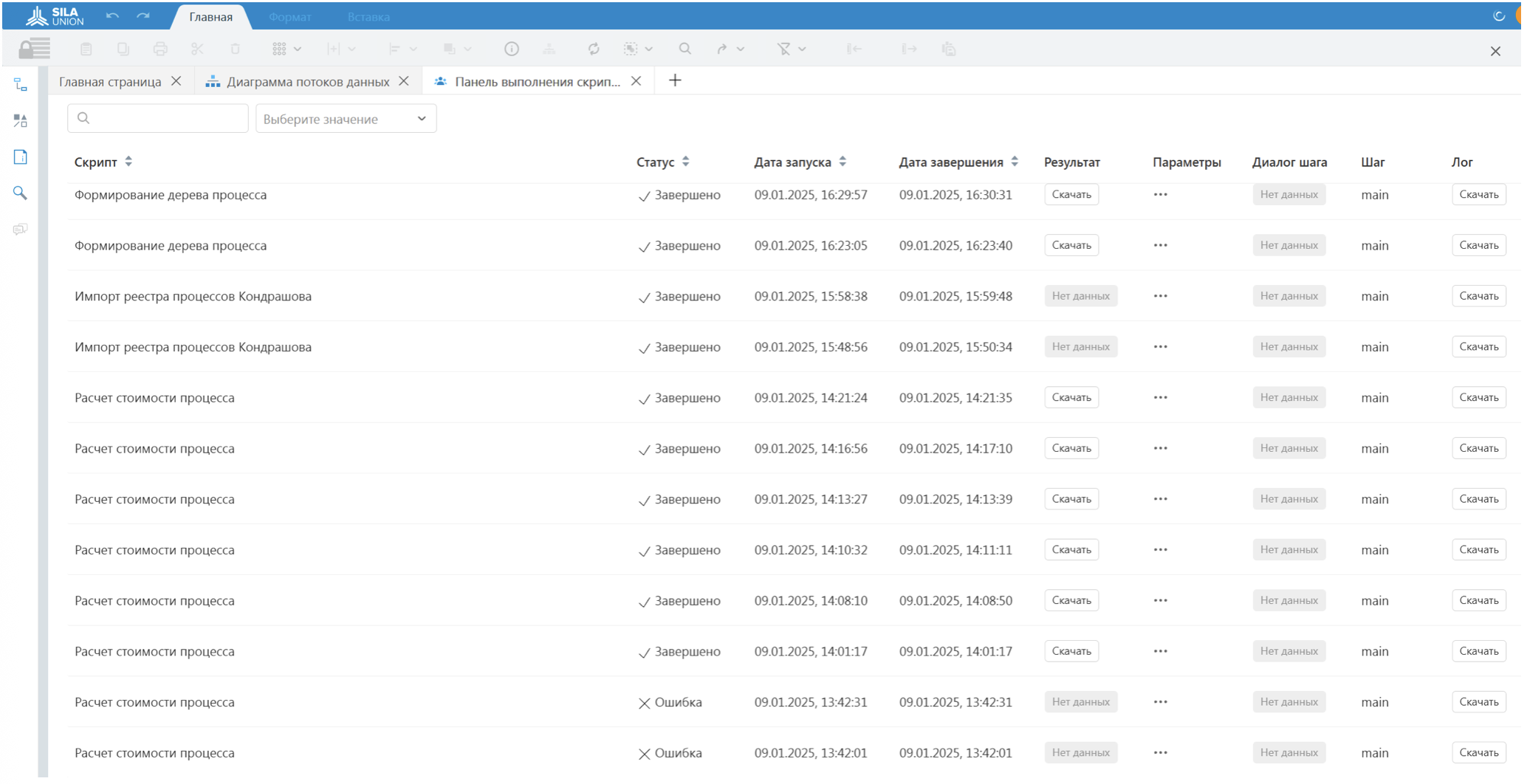
Figure 13. Script Execution History
5. Flexible modeling system with predefined presets. The out-of-the-box version of SILA Unio includes standard modeling presets—a set of rules and notations (e.g., BPMN 2.0). You can add, remove, and edit modeling rules and select the preset used for each database separately.

Figure 14. Current Methodology
This shows the current preset, which is applied by default when creating a new database.
The preset itself configures models, symbols, objects, and connections.

Figure 15. General Settings
This is what the symbol settings in the system look like, using BPMN 2.0 as an example.

Figure 16. Symbol Configuration
Thus, the thoughtful combination of a modern user interface and a deeply developed user experience makes SILA Union not just a modeling tool, but a highly effective digital transformation platform where ease of use directly contributes to business results.
UI/UX: Complementary Disciplines in Digital Product Creation
User interface (UI) design and user experience (UX) design require different skill sets, yet they are interdependent and directly impact each other's success.
UI focuses on the visual component—colors, typography, and element layout—forming the outer layer of interaction. UX, on the other hand, is responsible for the logic, architecture, and usability of a product, ensuring its effectiveness and user satisfaction.
These two disciplines are interrelated: a product with a flawless UI may not be accepted by users if it is difficult to navigate and navigate. At the same time, a perfectly designed interface can be marred by poor visual design, making the app unappealing and untrustworthy for the user.
The synergy of UI and UX creates a holistic, effective, and engaging product that not only satisfies functional needs but also creates the best possible user experience.
Conclusion
This article has briefly reviewed the key aspects of user interface (UI) and user experience (UX) design, demonstrating their importance using examples from SILA Union software.
High-quality interface design and a positive user experience significantly impact a product's success. For SILA Union, developing a UI/UX design tool is a strategic decision driven by the company's desire to improve operational efficiency, enhance its competitive advantage, and foster a customer-centric approach.
Integrating advanced UI/UX design practices into SILA Union's development processes is essential for creating a technologically advanced, reliable, and competitive product that not only solves business problems but also delivers a positive user experience at every stage of interaction.
Article Author: Pavel Vanbin, Business Analyst, SILA Union





